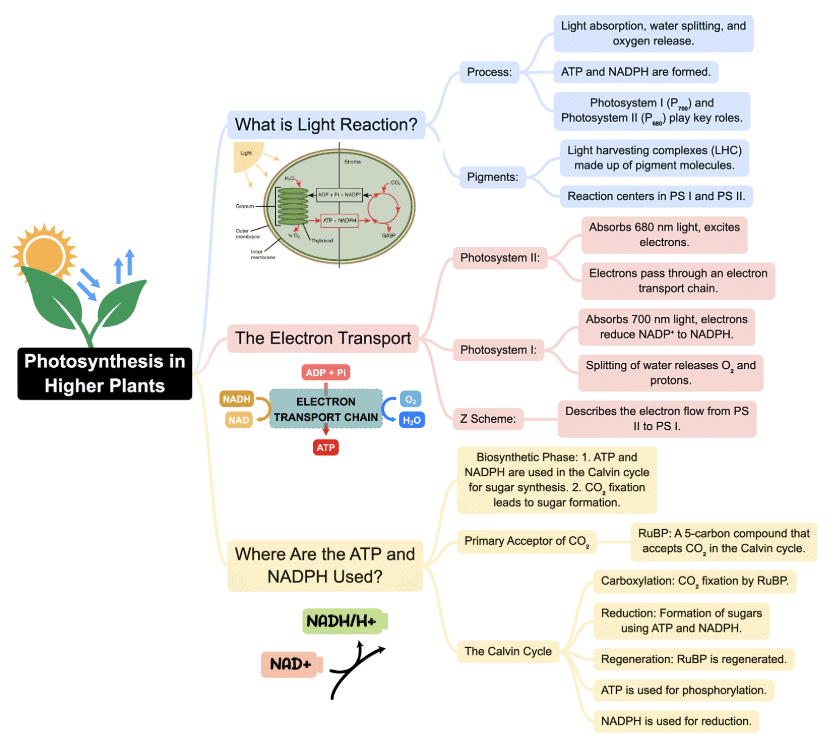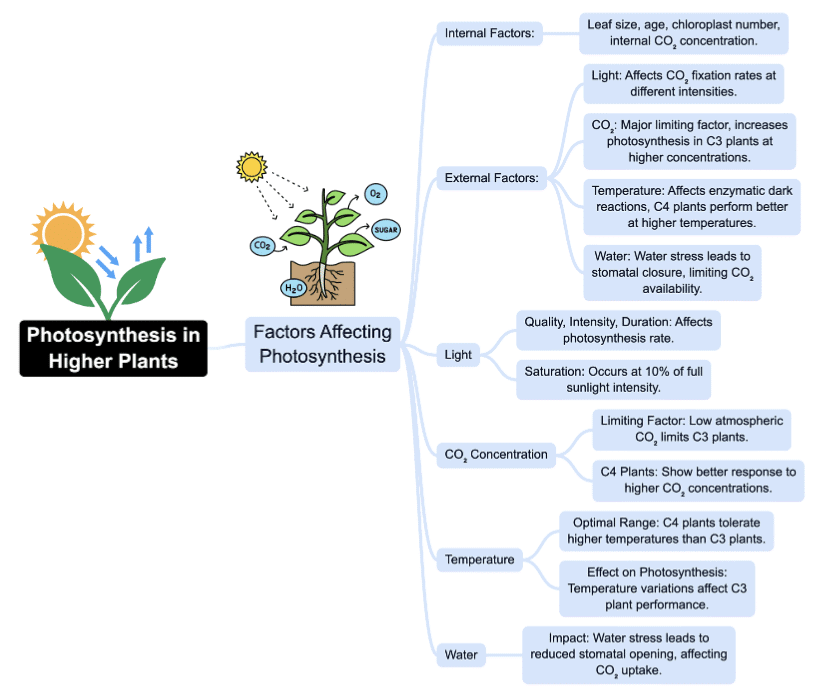NEET Exam > NEET Notes > Biology Class 11 > Mind Map: Photosynthesis in Higher Plants
Mind Map: Photosynthesis in Higher Plants | Biology Class 11 - NEET PDF Download




The document Mind Map: Photosynthesis in Higher Plants | Biology Class 11 - NEET is a part of the NEET Course Biology Class 11.
All you need of NEET at this link: NEET
|
150 videos|398 docs|136 tests
|
FAQs on Mind Map: Photosynthesis in Higher Plants - Biology Class 11 - NEET
| 1. What is photosynthesis in higher plants? |  |
Photosynthesis is the process by which higher plants, such as trees and flowering plants, convert sunlight, water, and carbon dioxide into glucose and oxygen. This process occurs in the chloroplasts of plant cells, specifically in the green pigment called chlorophyll.
| 2. How does photosynthesis occur in higher plants? |  |
Photosynthesis in higher plants occurs in two main stages: the light-dependent reactions and the light-independent reactions (also known as the Calvin cycle). In the light-dependent reactions, sunlight is absorbed by chlorophyll, which energizes electrons and generates ATP and NADPH. In the Calvin cycle, ATP and NADPH are used to convert carbon dioxide into glucose.
| 3. What is the role of chlorophyll in photosynthesis? |  |
Chlorophyll is a pigment found in the chloroplasts of higher plants that plays a crucial role in photosynthesis. It absorbs sunlight and transfers the energy to the reaction centers, where it initiates the conversion of light energy into chemical energy. Without chlorophyll, plants would not be able to carry out photosynthesis efficiently.
| 4. What are the factors that affect photosynthesis in higher plants? |  |
Several factors can affect the rate of photosynthesis in higher plants. These include light intensity, carbon dioxide concentration, temperature, and the availability of water. Higher light intensity generally leads to increased photosynthesis, while lower carbon dioxide levels or extreme temperatures can inhibit the process.
| 5. How does photosynthesis in higher plants contribute to the environment? |  |
Photosynthesis in higher plants plays a vital role in maintaining the balance of the Earth's atmosphere. Through the process of photosynthesis, plants remove carbon dioxide from the air and release oxygen, providing the necessary oxygen for both humans and animals. Additionally, photosynthesis is the primary source of organic compounds in the food chain, supporting the entire ecosystem.
Related Searches






















